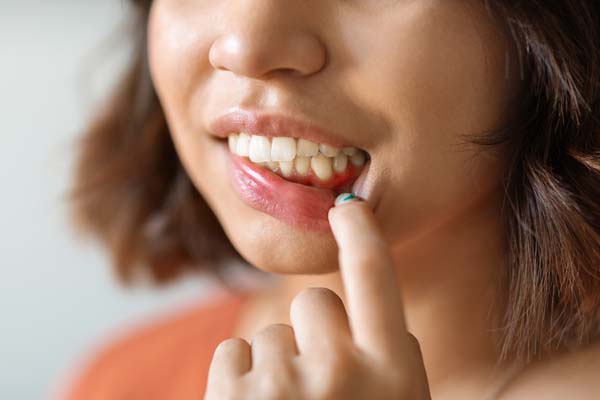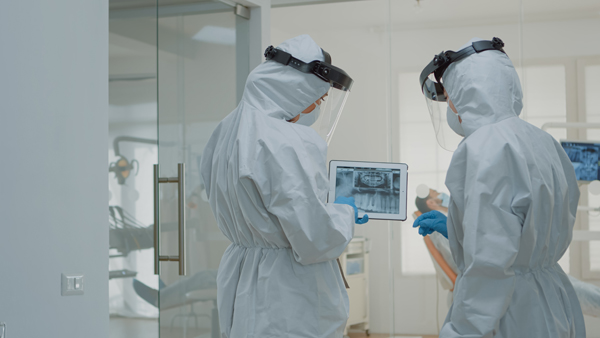Gum Disease: How to Reverse It and Get Healthy Gums Again

Anyone who has ever had gum disease knows that it can have serious consequences. If you have the signs and symptoms of this condition, you should act now and start treating it. In the early stages, it is possible to cure it and restore the full health of your gums. Waiting too long could have long-term, irreversible effects.
How gum disease starts
Like any other oral health issue, this disease begins gradually. Though genetics can be a factor, making people more prone to gum problems, poor oral hygiene is usually the cause. When a person does not brush or floss regularly, food particles will cause a buildup of plaque. This hardens and becomes tartar, leaving bacteria in pockets at the gumline and between teeth. The bacteria will infect the gums, making them inflamed. Eventually, the gums will pull away from the teeth, putting the person at risk of suffering tooth loss.
Never delay
People often delay treating the disease, thinking it will improve on its own. The smartest plan is to improve oral hygiene right away and seek a dentist’s help to overcome the condition. Early-stage gum disease, called gingivitis is treatable and reversible. However, if the disease progresses into periodontal disease, no intervention can fully reverse it.
Brush often
Brushing with fluoride-based toothpaste is one of the most effective ways to turn back gum disease. People of all ages should brush at least twice a day with a soft-bristled brush for about two minutes every time. Make sure to get every part of every tooth, including at the gumline. It is helpful to brush before bedtime, at the start of the day, and after mealtimes.
Do not forget to floss
Another good way to handle gum disease is by flossing. This should occur daily, though flossing too frequently can damage the gums. Proper flossing dislodges food particles from in between teeth. This discourages the growth of bacteria and the formation of plaque and tartar. With flossing, the gums should remain pink and firm.
Visit the dentist
Sometimes, at-home care is not going to be enough to revive gum health. For more advanced gingivitis, the patient needs treatment from a dentist. The dentist will first examine the patient to see the extent of the damage. The hygienist will do a thorough cleaning, which will include scraping off any plaque and tartar. The hygienist may also measure gum density. More in-depth treatments for gum disease include root planing and scaling.
You can revive your gums and avoid severe problems
It is bad enough having swollen gums and bleeding, but more serious issues can result from gum disease. Without the right care and treatment, you could lose teeth or even have an infection spread to your heart. The good news is that you can improve your brushing and flossing to reverse the effects of this condition. Your dentist will also recommend different approaches to help you regain your oral health. Make an appointment today if you are concerned about the way your gums look and feel.
Request an appointment here: https://www.southlakedentalcare.com or call SouthLake Dental Care at (904) 512-3054 for an appointment in our Middleburg office.
Check out what others are saying about our dental services on Yelp: Gum Disease in Middleburg, FL.
Recent Posts
Flossing is an important component of preventive dentistry. Flossing must always accompany daily brushing. This may seem insignificant. After all, it involves running a line of floss through the thin gaps of your teeth. Even so, flossing benefits your teeth. If you want to know how valuable flossing is for preventive dentistry, here are the…
You might want to head to a general dentist if you find yourself dealing with a cavity. Cavities are tiny holes that form on teeth because of tooth decay. Acids created by oral bacteria eat away at teeth surfaces, creating those tiny holes. Other symptoms include reoccurring toothaches, increased sensitivity to hot and cold foods,…
Curious about when tooth extractions are needed? Read on to learn more. Tooth extraction is when the tooth is removed completely from its socket. Tooth extraction is hardly a procedure anyone looks forward to, but the majority of the procedures are fast and painless. So do not be alarmed if your dentist starts talking about…
The popularity of Invisalign® has grown as the treatment has proven to produce successful and positive results. Additionally, the treatment process is unlike any other. The actual process is a lot simpler than traditional approaches, and there are benefits that come with Invisalign® too. One more important part of Invisalign® treatment is the need to remain disciplined with wearing…


